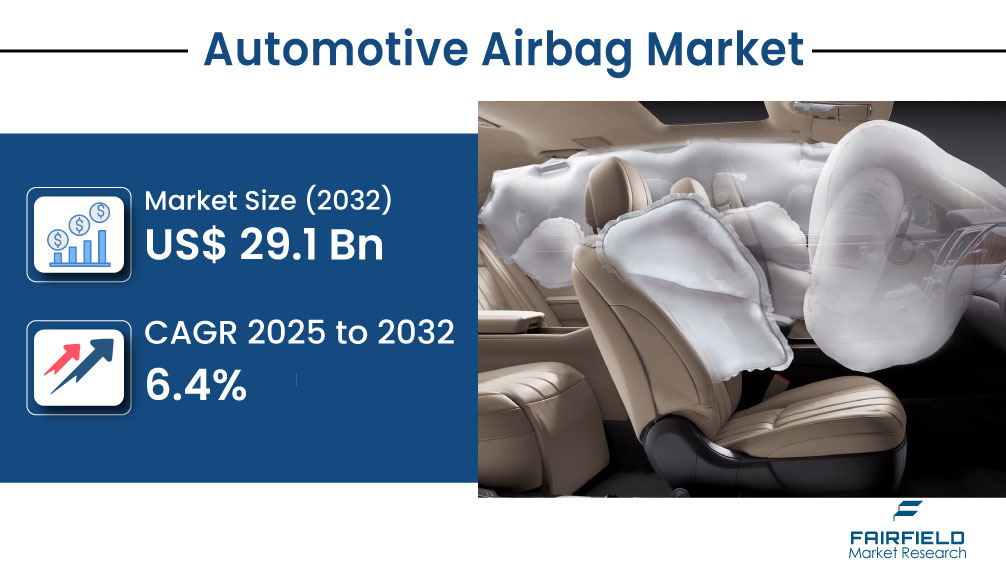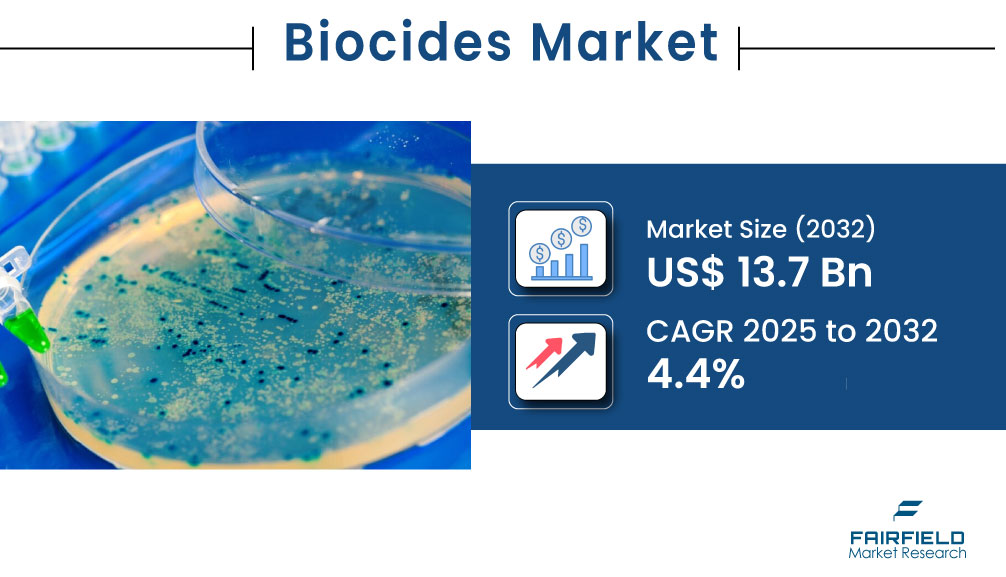Global Automotive Airbag Market on Track for Robust Growth, Projected to Reach US$ 29.1 Bn by 2032 | Fairfield Market Research

Strong 8k brings an ultra-HD IPTV experience to your living room and your pocket.
The global automotive airbag market is poised for remarkable growth, forecasted to expand from US$ 18.9 Bn in 2025 to US$ 29.1 Bn by 2032, registering a healthy CAGR of 6.4% during the period. According to Fairfield Market Research, the market’s acceleration is driven by a confluence of stricter safety regulations, rising consumer expectations for vehicle safety, and rapid advances in smart airbag technologies—particularly within the growing electric vehicle (EV) and autonomous mobility sectors.
𝐄𝐱𝐩𝐥𝐨𝐫𝐞 𝐭𝐡𝐞 𝐅𝐮𝐥𝐥 𝐑𝐞𝐩𝐨𝐫𝐭: https://www.fairfieldmarketresearch.com/report/automotive-airbag-market
As the automotive landscape evolves, airbags are no longer just mandatory equipment for compliance—they are strategic safety systems that offer real-time, adaptive protection across a variety of crash conditions. This shift is reshaping design and manufacturing priorities for OEMs and Tier 1 suppliers globally.
Stronger Regulations and Informed Consumers Fuel Demand
Governments worldwide are enforcing tighter vehicle safety standards. From North America and Europe to emerging economies like India and Brazil, regulations now call for more comprehensive protection—often mandating multiple airbags in even base-model vehicles. For example, India’s requirement for six airbags in all passenger cars has significantly influenced design frameworks in one of the world’s largest auto markets.
In tandem, consumers are more educated about vehicle safety than ever before. With access to safety ratings and crash-test results, buyers are actively seeking cars equipped with advanced occupant protection features. This shift in consumer priorities has led automakers to expand airbag integration beyond front seats to include side, curtain, and even rear passenger areas.
Challenges in Design and Market Access Remain
Despite positive momentum, the automotive airbag market faces notable challenges. Integrating airbag systems into next-generation vehicles—especially electric and autonomous models—introduces new design complexities. These vehicles often have unconventional cabin layouts that require tailor-made airbag solutions, increasing R&D and production costs.
In many developing countries, while airbag legislation is being introduced, enforcement is uneven and consumer awareness remains inconsistent. Moreover, cost sensitivity in these regions limits adoption of high-end safety systems in low-cost vehicles, slowing market penetration in price-conscious segments.
Smart Airbags and EV-Centric Designs Open New Opportunities
Smart airbag systems are emerging as a pivotal opportunity. These solutions use integrated sensors and data analytics to determine factors like occupant size, position, and impact severity—enabling adaptive deployment for better safety outcomes. With growing adoption of Advanced Driver Assistance Systems (ADAS), airbags are now part of a connected safety ecosystem within modern vehicles.
The rise of electric vehicles is another major growth catalyst. As EV manufacturers focus on weight optimization and space efficiency, demand for lightweight and compact airbag systems is rising. These airbags are being engineered to match new vehicle architectures while offering premium protection, particularly in EV-specific seating arrangements or battery placements.
Additionally, mid-range and compact vehicles in fast-growing economies are beginning to feature multi-airbag configurations, driven by regulatory reform and rising income levels. This presents a compelling opportunity for global suppliers to deliver scalable solutions tailored to cost-sensitive markets.
Frontal Airbags Dominate, but Side and Curtain Systems Gain Momentum
Frontal airbags remain the largest segment of the market, supported by universal regulatory mandates and well-documented effectiveness in head-on collisions. However, other airbag types are gaining importance. Side airbags help protect the torso in lateral crashes, while curtain airbags provide head protection in side impacts and rollovers. Knee airbags add protection for lower limbs, and rear airbags are being introduced in luxury models to extend safety coverage to all passengers.
One of the most significant developments came in 2024, when Autoliv launched a new “Smart Airbag” platform. Designed to respond to real-time occupant data, this system tailors airbag deployment to offer more personalized and efficient protection—marking a key step toward data-driven vehicle safety.
Regional Outlook: Asia Pacific Leads in Volume, Europe Pushes Innovation, Latin America Rises
Asia Pacific continues to lead the global automotive airbag market, driven by large-scale vehicle production, government safety mandates, and growing consumer awareness. Countries such as China, India, and Japan are rapidly adopting new safety standards, with OEMs localizing airbag production to reduce costs and meet regulatory requirements efficiently.
Europe is at the forefront of innovation in airbag technologies. With stringent crash safety programs like Euro NCAP, consumers and regulators expect nothing less than cutting-edge protection. European manufacturers are early adopters of advanced, smart, and EV-compatible airbag systems—often setting the benchmark for global trends.
Latin America is experiencing steady growth as regulatory changes take hold. Brazil and Mexico, in particular, are enforcing new frontal airbag mandates, prompting OEMs to update models and increase regional airbag production. As vehicle sales rise across the region, the demand for affordable safety technologies is strengthening.
Competitive Landscape: Market Leaders Prioritize R&D and Localized Production
The global automotive airbag market is moderately consolidated, with leading players including:
Autoliv Inc.
ZF Friedrichshafen AG
Joyson Safety Systems
Toyoda Gosei Co., Ltd.
Hyundai Mobis
Bosch GmbH
Denso Corporation
Continental AG
Delphi Automotive
Mitsubishi Electric Corporation
Nihon Plast Co., Ltd.
Note: IndiBlogHub features both user-submitted and editorial content. We do not verify third-party contributions. Read our Disclaimer and Privacy Policyfor details.







